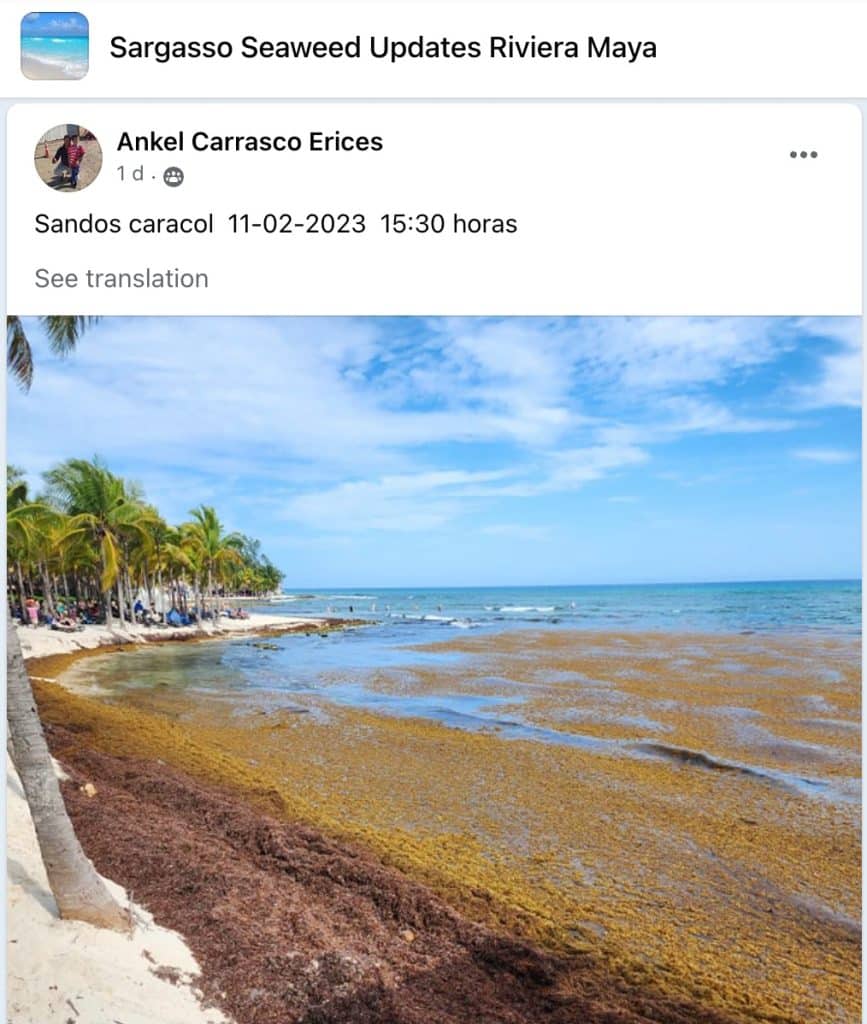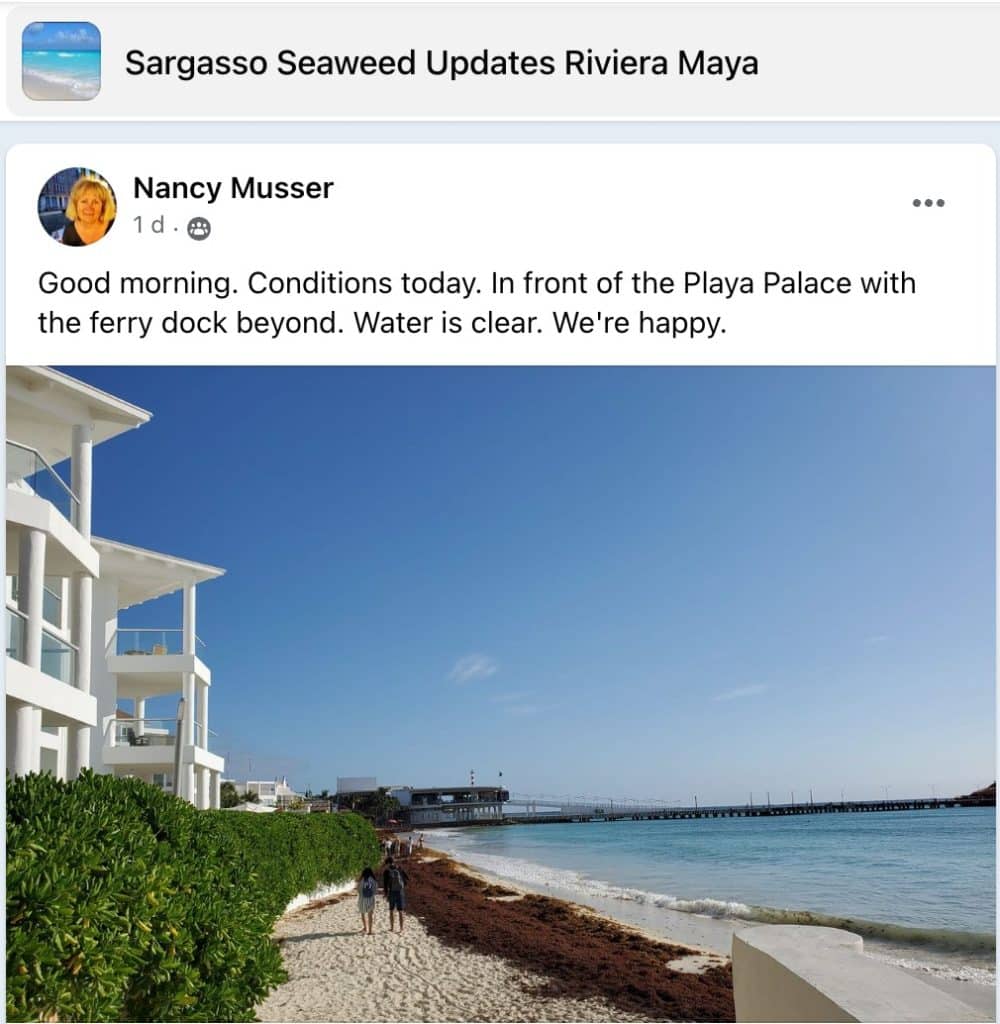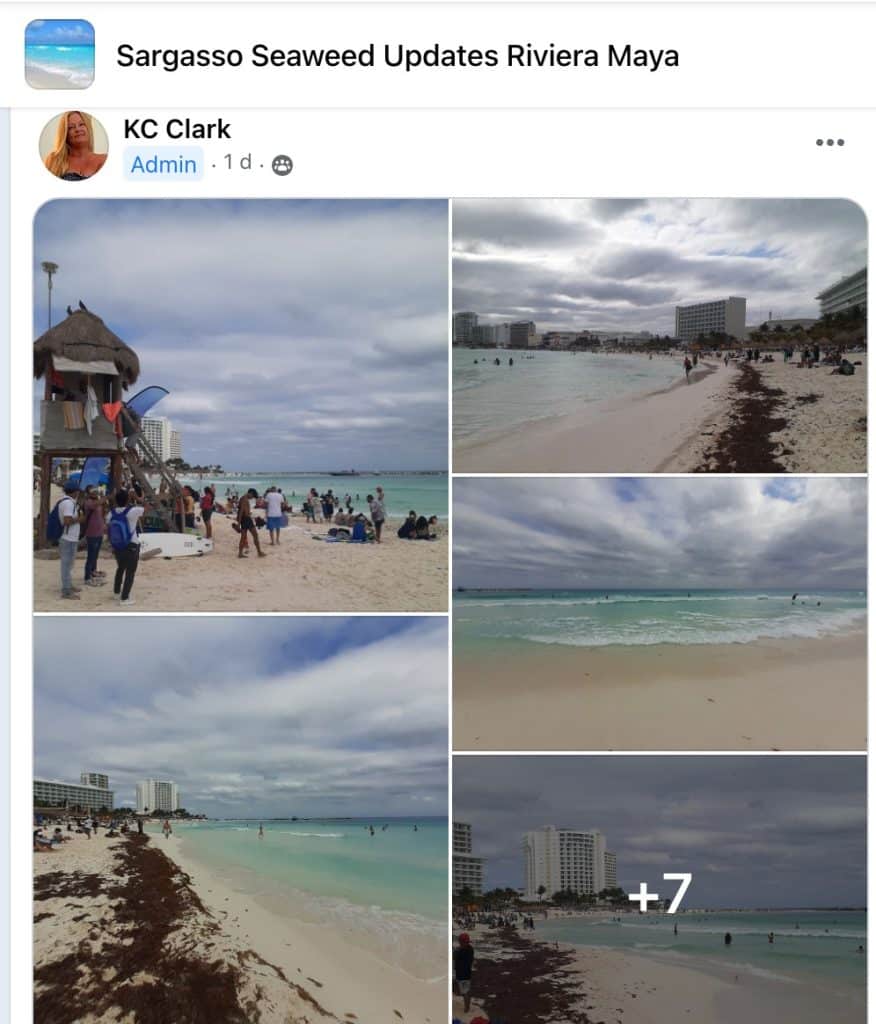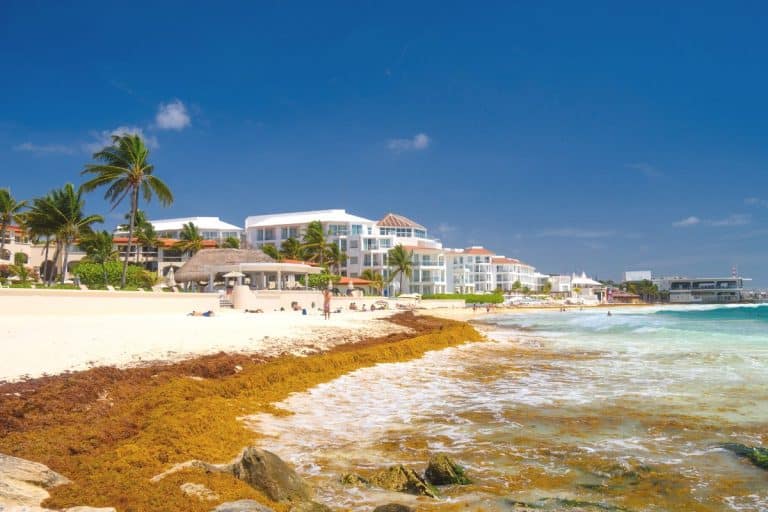The Quintana Roo Sargassum Monitoring Network has issued a red alert after excessive amounts of the marine algae Sargassum were found on 40 beaches in the northern region of the state, including some beaches in Cancun.
Sargassum is difficult to predict because it depends on a number of variables, including tidal shifts, bad weather and a failure of sargassum prevention measures.
Here is all the information travelers require on the recent red alert issued over the weekend for the area’s beaches.
Sargassum levels in the Cancun area have been significantly lower than in previous years. Some reports indicated that only traces of the invasive alga had washed up on the beaches of Cancun and surrounding areas, and that this year’s harvest would be significantly lower than previous years. The problem worsened over the weekend, when dozens of beaches around Quintana Roo reported an excessive amount of sargassum.
According to the Quintana Roo Sargassum Monitoring Network, 40 beaches between the southern Arco Maya beach in Tulum and Playa Coral in the Punta Nizuc area of Cancun registered abnormal amounts of sargassum. In addition to the 40 beaches with excessive levels of sargassum, eight other beaches had ample levels, and four were said to have moderate levels.
These beaches at Tulum, Solidaridad, Puerto Morelos, and part of Cancun were the first to have this macroalga in significant abundance. The ten beaches east of Cozumel – from Nizuc Playa Coral in Ventura Park to Arco Maya in Tulum – are also included in the red color.
Latest photos from FB Group (Sargasso Seaweed Updates Riviera Maya)



The only beaches that prevent the arrival of macroalgae and keep their beaches clean or with a low occurrence of sargassum are the beaches in Holbox, Contoy, Isla Mujeres, the hotel district of Cancun, the coast of Cozumel and the lagoon of Bacalar.
Sargassum remains largely absent from Cancun’s beaches, supporting a recent report that the popular vacation spot would survive February without the seaweed. While mostly harmless (aside from the tiny sea creatures living inside it that can irritate the skin), it’s the rotten-egg smell it emits when it rots that causes most tourists to approach it with revulsion.

